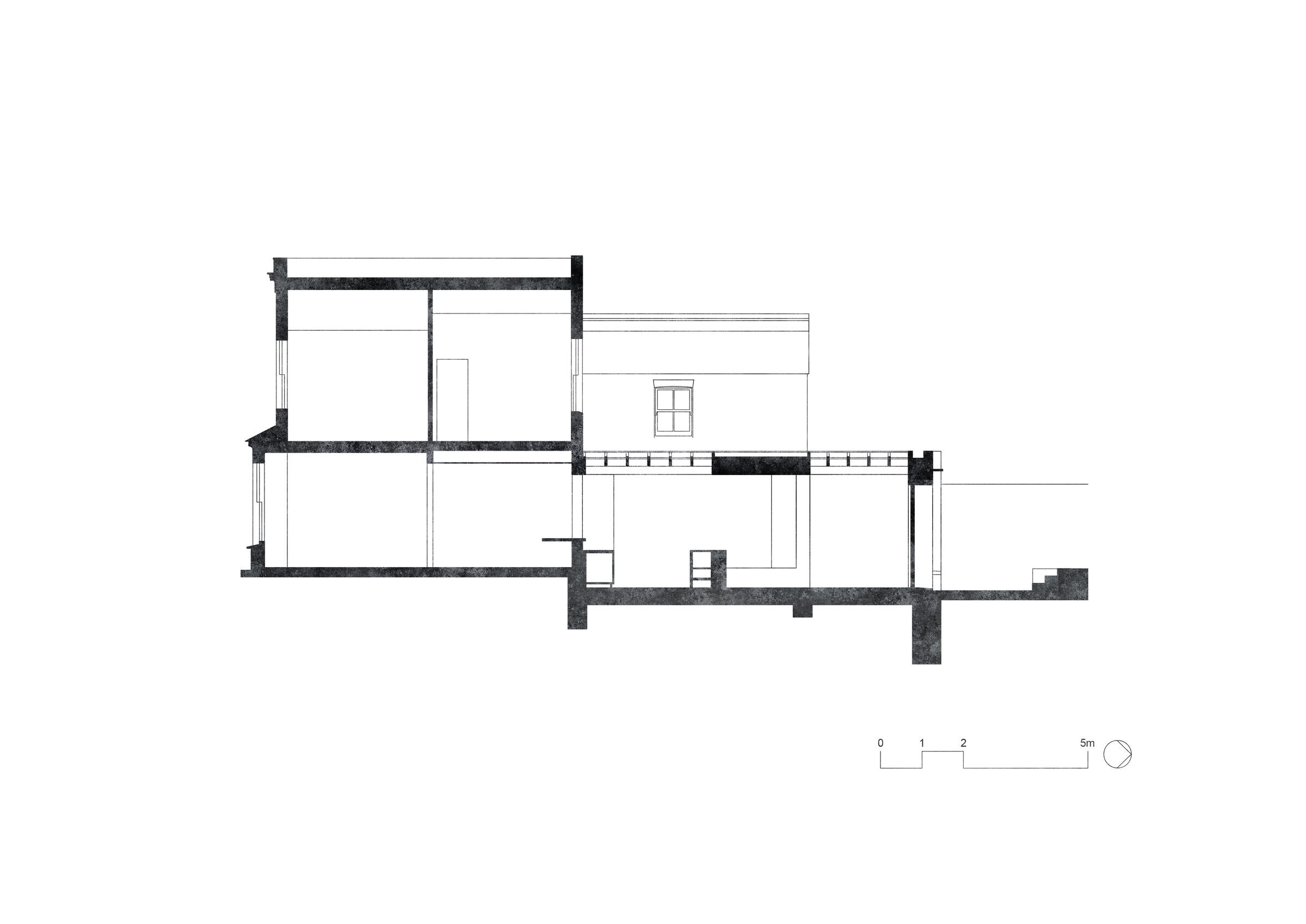DGN Studio has demonstrated adaptability to an ever-evolving brief at Magpie House, resulting in a bright, material-first refurbishment and extension of an East London terraced home for a textile designer and digital designer.
The clients, keen collectors of mid-century furniture with extensive knowledge in self-build projects, approached DGN Studio to open and extend the ground floor of their north-facing home. The brief quickly grew to encompass refurbishing the upper floor, requiring DGN Studio to execute a cohesive renovation throughout while incorporating many repurposed fittings and furniture from the clients’ vintage collection.


Working first on the principles of spatial planning and natural light, DGN Studio redesigned the existing ground floor plan to encompass a more cohesive and seamless sequence for living, dining, and cooking. DGN Studio reworked the traditional configuration of smaller rooms, opening the centre of the plan to create a welcoming living space on entrance, which leads down into the new kitchen and dining space, which extends 3 metres into the rear garden.
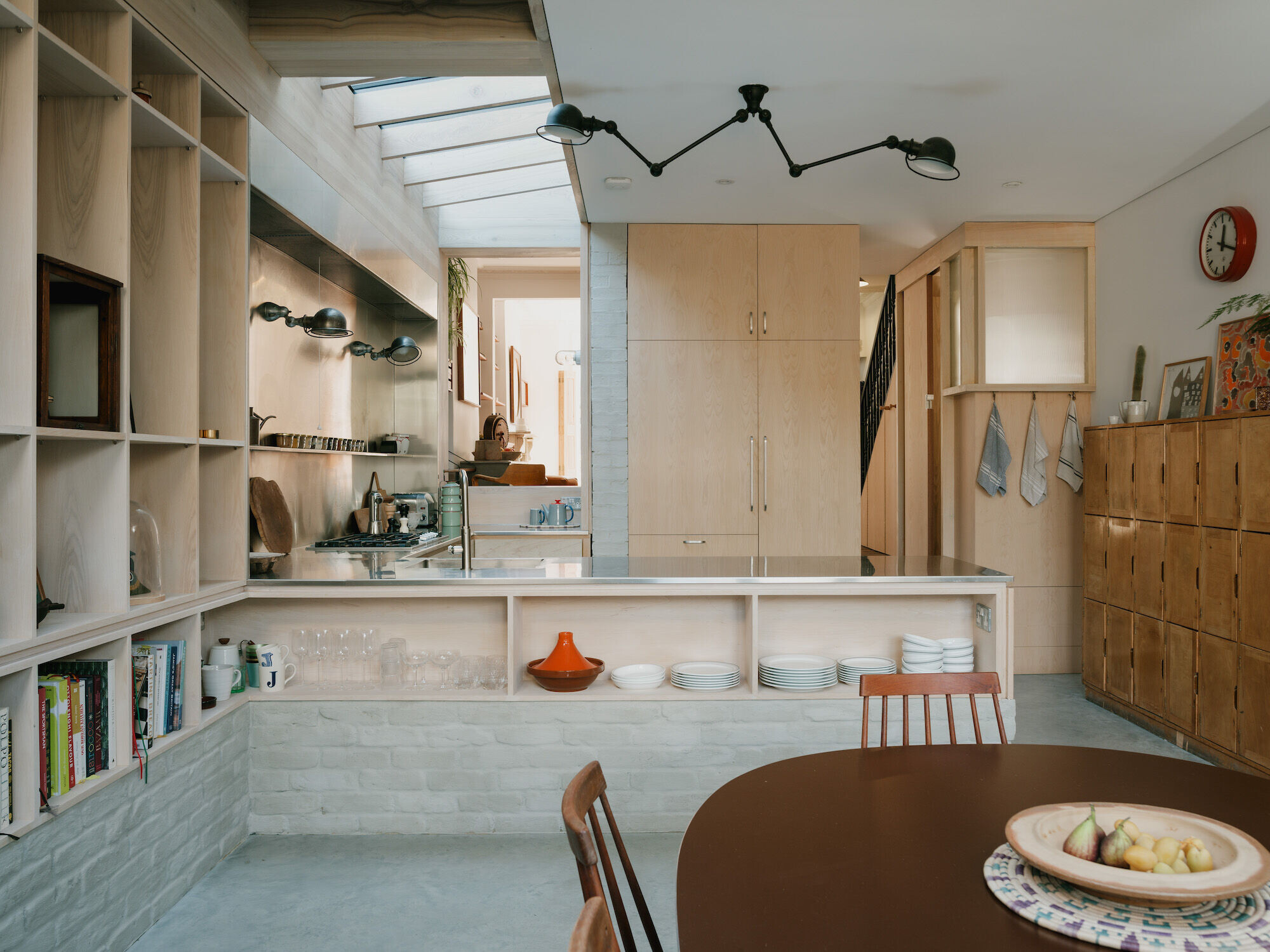

Connection to the garden was central to the brief, met with the addition of a cast concrete and dark stained oak window seat at the rear elevation, the glazed panels of which can be entirely opened to offer a seamless flow from dining area to garden. Outside, the rear façade is designed to offer depth and a degree of privacy. It has an expressive, galvanised steel structure with dark stained timber window trims, chosen to tie neatly in with the existing black-stained garden room. Slim steel posts break up the dark elevation, which is topped by a thick lead parapet that projects to create a small overhang, sheltering the bench below from rain.


The courtyard is a low maintenance space featuring gravel overlaid with reclaimed steel mesh panels, and brewer’s malting kiln tiles salvaged and repurposed by the client as part of a careful narrative of old and new.
This stitching and weaving of different material components and objects inherited from the client continues throughout the home. In the new extension, DGN Studio treated reclaimed London stock bricks with a mineral paint for a softer interior. Set three steps down from the entrance level, the new extension takes advantage of increased ceiling heights and overhead glazing.
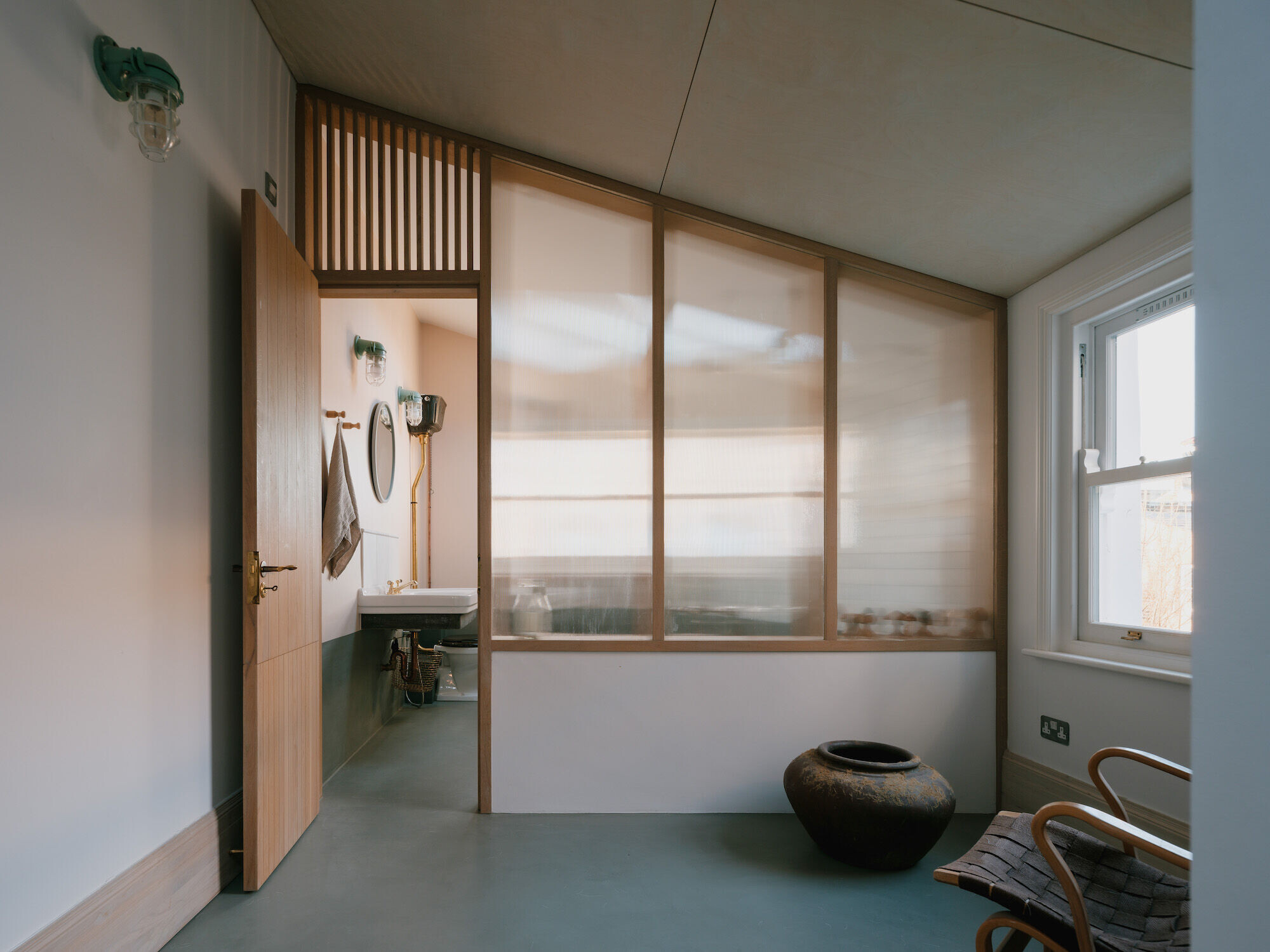

The requirement for an economic and functional kitchen is accommodated by large joinery pieces for plentiful storage, all designed to work around items that were already in the client’s possession such as the oven and hob. Stainless steel counters and splashback act as the main material of contrast against ash cupboards and open shelving. These extend to a larger, stainless-steel unit that conceals the extract at high level, as well as providing ample space for preparation to service large gatherings. An ash wood cut out in the wall connects the kitchen to the sitting room at the front of the home, elongating site lines throughout the ground floor.
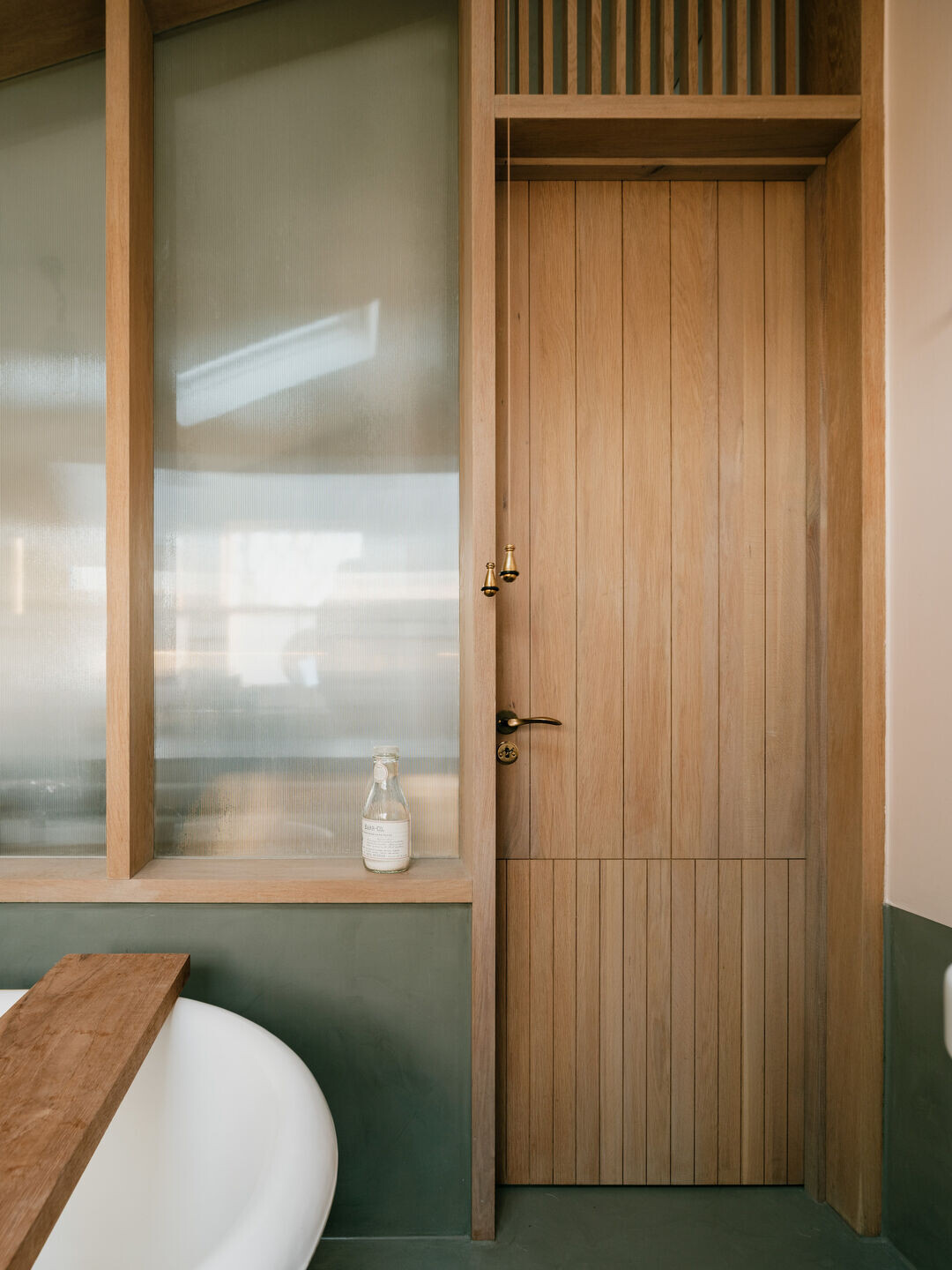

Upstairs, the floor plan is rearranged to accommodate two bedrooms and a family bathroom in lieu of the previous three bedroom arrangement, which can still accommodate a third small bedroom in future if required. The new bathroom is enclosed in an oak-framed reeded glass screen with slatted timbers above the door to allow light to permeate into the top floor. Microcement floors are taken up to the walls, with the interior designed around the clients’ collected items including the loo, large sink and bath.
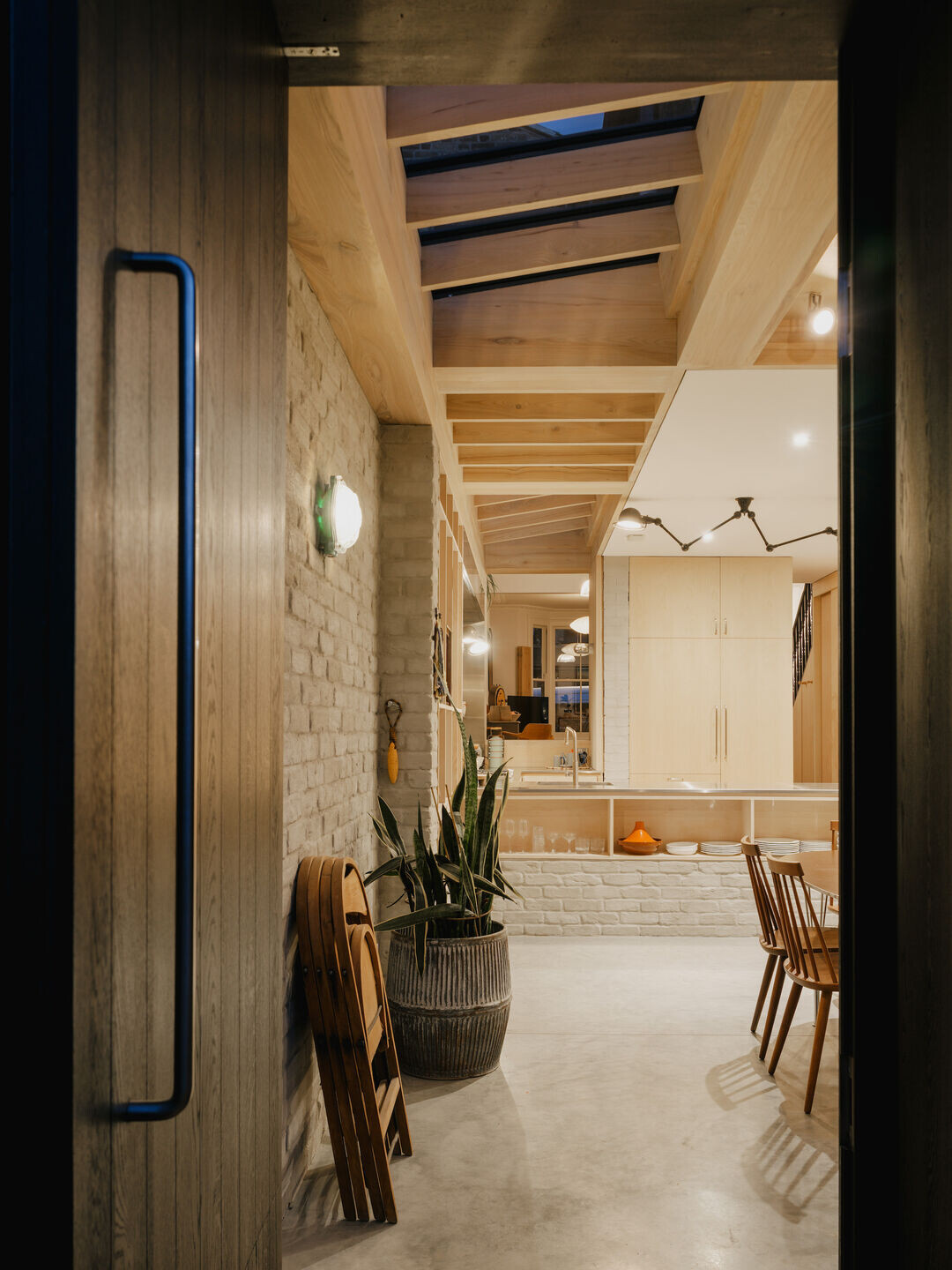
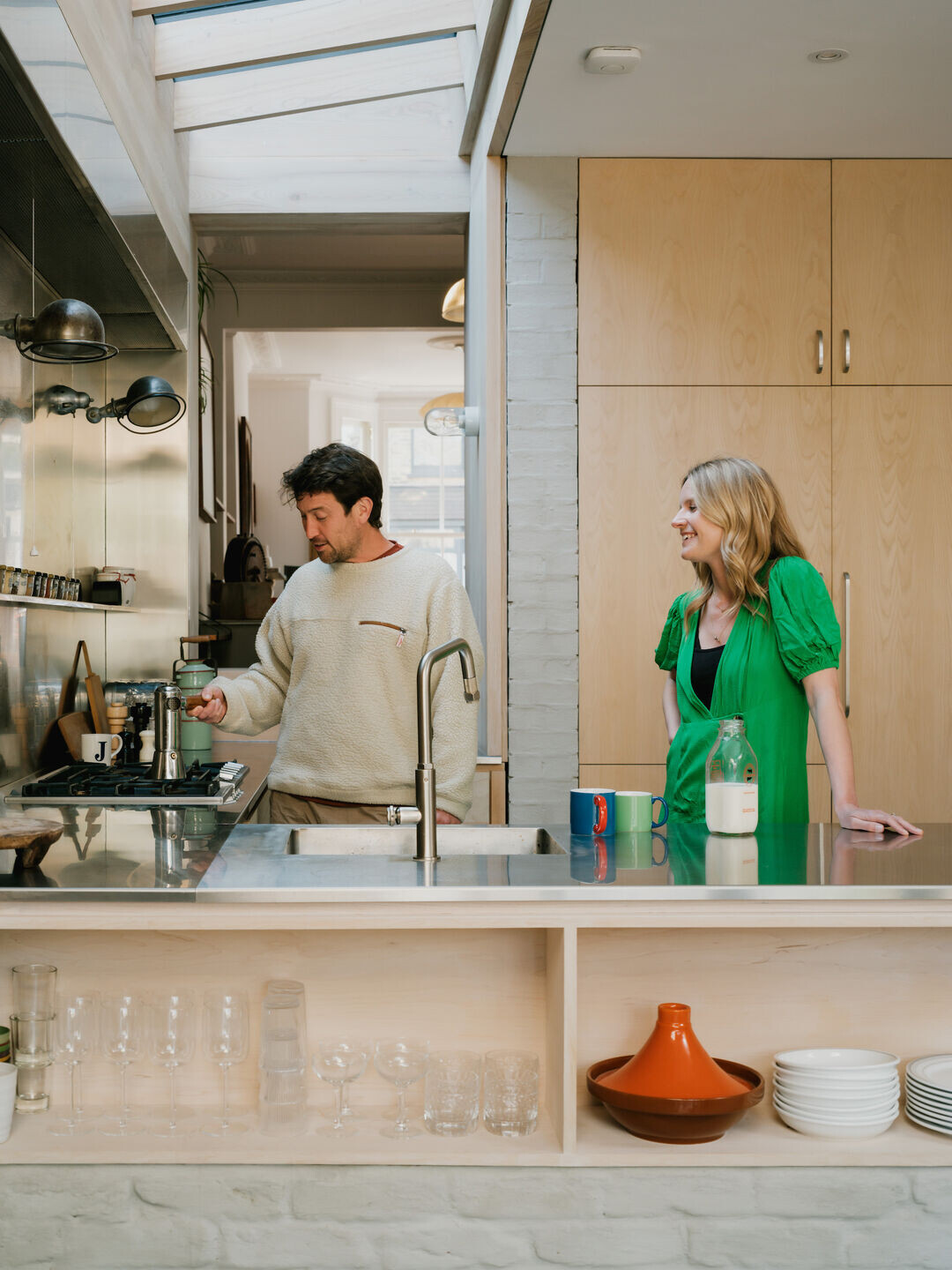
In lieu of the former, narrow corridor outside the bathroom, a bright, open landing can now accommodate a sofa or study, going beyond mere circulation space. A wood floor reclaimed from the structural and supporting timbers of historic barns throughout the North-East & Mid-Atlantic regions elevates the feel of it as a transitory space to the bedrooms where minimal alterations were made.
The project was facilitated by a long-term relationship between the client and contractor, as well as a sensitive attitude to reusing found objects. DGN Studio rethought the traditional design process in favour of a more intuitive, flexible approach, testing new ways of working in a more agile and responsive manner to site processes, making Magpie house a successful collage of many hands.

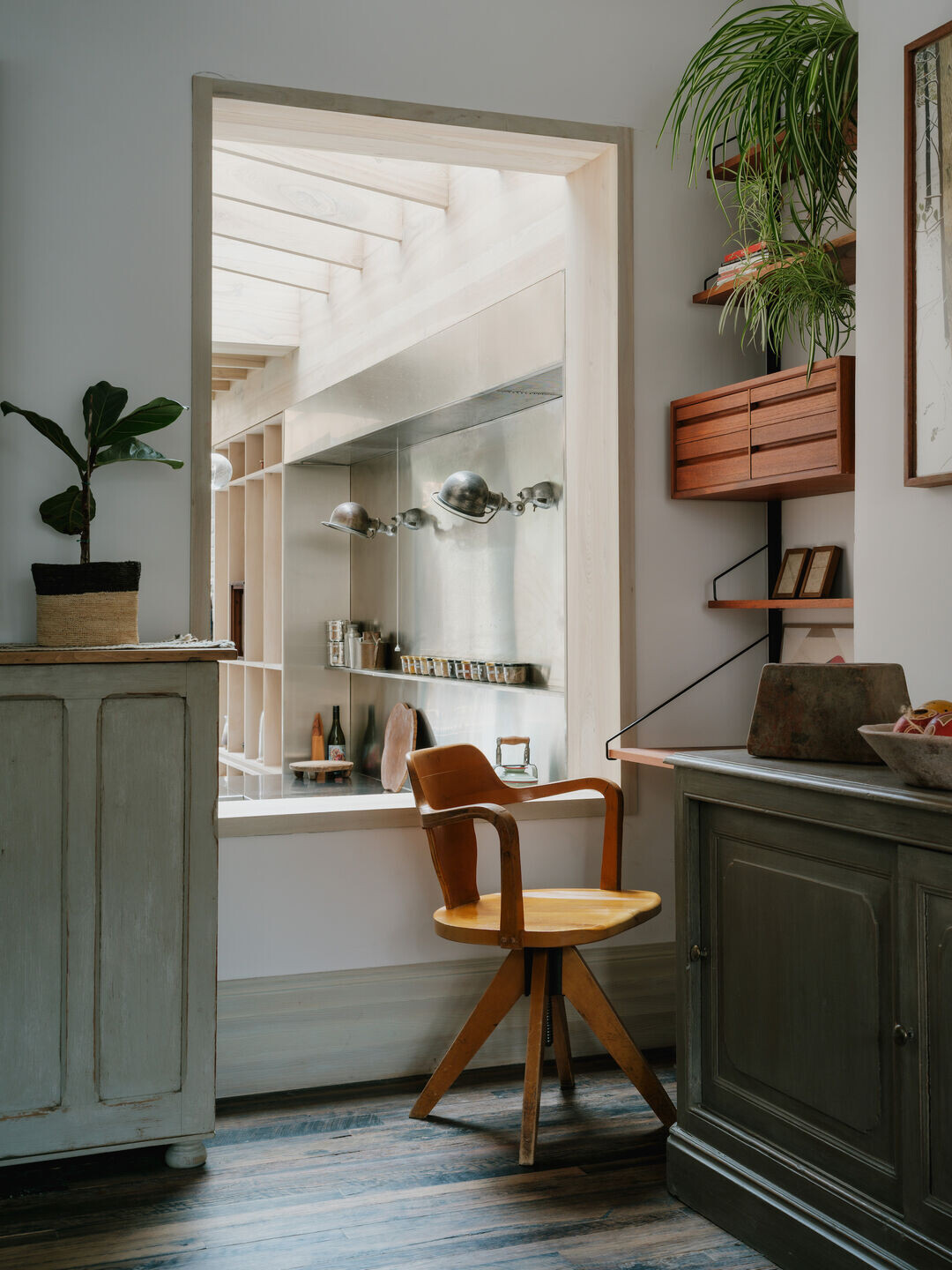
Daniel Goodacre, Director DGN Studio, says:
“Magpie House was conceived as a home for John and Alice but also a personal museum for their incredible collection of mid century furniture and artworks. We focused on creating spaces of architectural integrity, allowing our work to become a backdrop for the many materials, fittings, and fixtures John and Alice brought to the home.”


Clients John Sinclair and Alice Saunders say:
“DGN Studio was very responsive to our brief, which evolved continually. We had worked with Daniel on a previous project when he was part of another practice, and it was wonderful to have a trusted and talented architect at the helm of Magpie House.”

Team:
Architect: DGN Studio
Clients: John Sinclair & Alice Saunders
Engineer: Constant Structural Design
Party Wall Surveyor: Schofield Surveyors
Approved Inspector: Act Building Control
Contractor: DBMS Ltd
Joiner: DBMS Ltd
Still Photography: © Tim Crocker
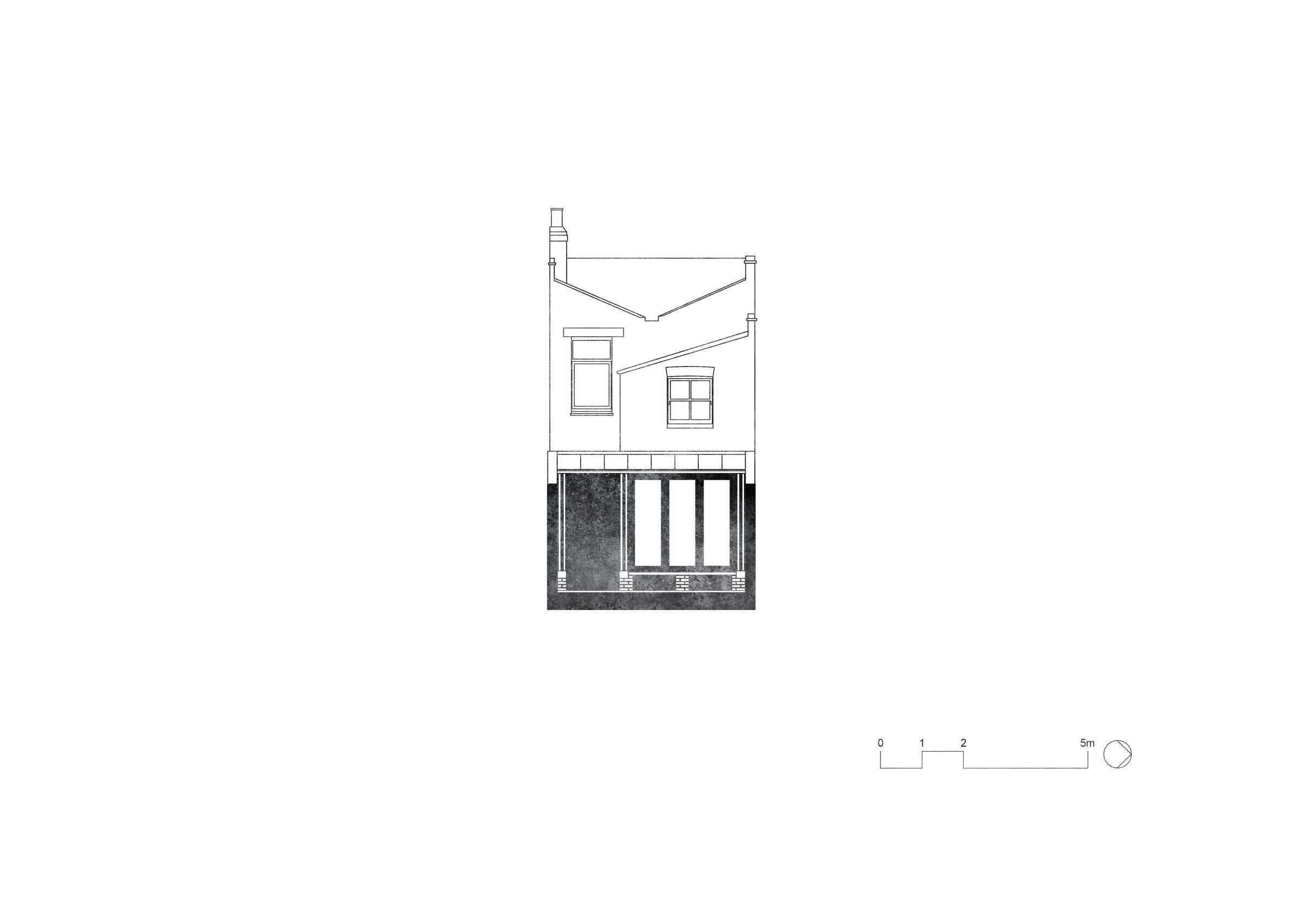
Materials Used:
Flooring: Polished Concrete Floor (Ash White) - Steyson Granolithic; Timber Floor (New England Oak) - Reclaimed Flooring Co.
Kitchen: European Ash / Stainless Steel - DGNS design / DBMS Ltd construct
Bricks: Reclaimed
Sanitaryware: Client collection
Tapware: Client collection / Lefroy Brooks
Painting: Farrow & Ball
Reeded glass: Float Glass Design
